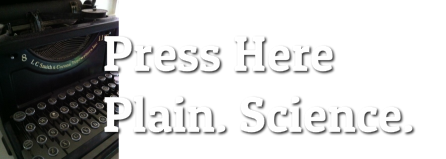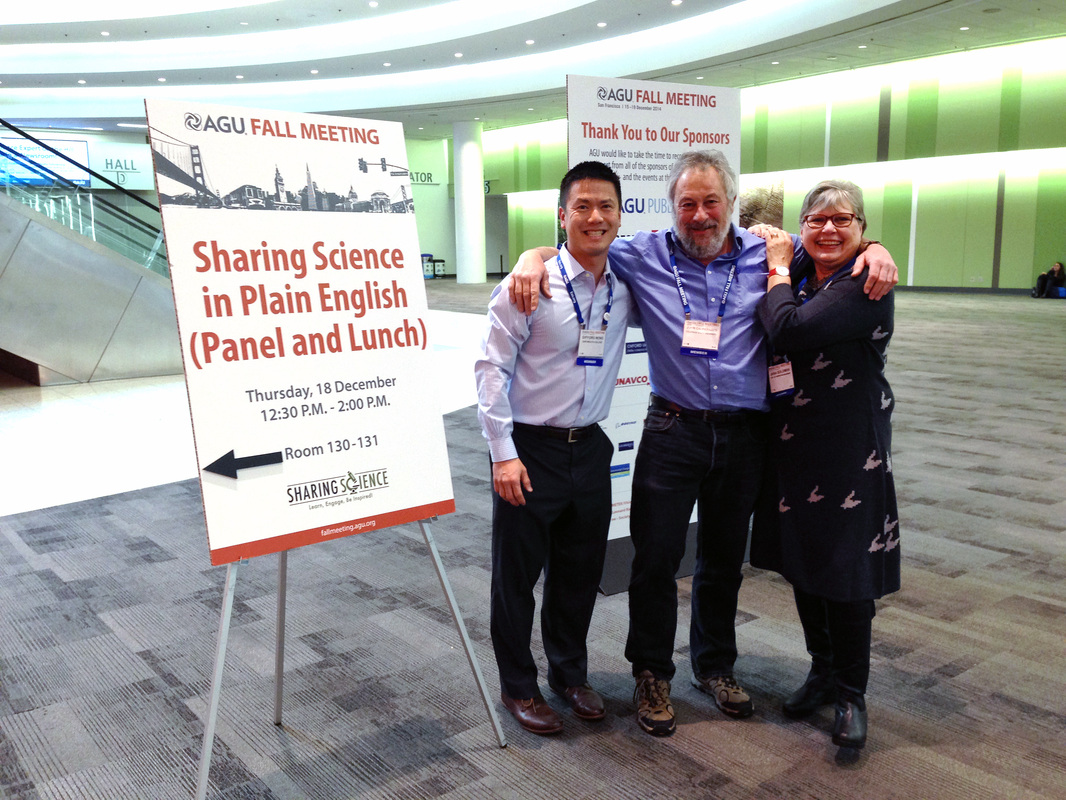It was a delight to present at the Plain Language Association International (PLAIN) conference in Graz, Austria in September.
Here’s my presentation focusing on the need for scientists to talk to the general public about their work and why plain language helps them do just that.
My background ranges from daily newspaper reporter and editor, to Deputy Press Secretary for a U.S. Senator, to public affairs officer for the research office of a US science agency, to now. While I was at the National Oceanic and Atmospheric Administration, the Plain Writing Act of 2010 was signed. I became a plain language trainer.
I was using plain language in my previous jobs and always worked with NOAA scientists to refine and clarify their work so I could understand it and explain it to the members of the media with whom I worked. The Plain Writing Act gave me another reinforcement to work with scientists.
Plain language helps scientists improve the relationships with their customers – those who need data to help make policy or personal decisions. Scientists should spend almost as much time talking about their research as they do conducting it.
But some are better at it and want to do it, others either aren’t good or don’t want to do it. We need to concentrate on those who see the value and want to improve their skills.
Those of us in communication work hard to ensure that information shared with the public is clear, concise, and relevant.
But scientists tend to look at the big picture – global effects, where as the general public wants local information – will it rain in my neighborhood tomorrow. How we find that happy medium is often left to the science communicators. We know how the science works and we know how to share that with the general public.
But many people – especially the media – don’t want to talk to people like me – the communicator. Rightly so, they want to hear right from the source – the scientists. The people out there in the field, taking the measurements and collecting the data.
Scientists have been reluctant to talk about their work beyond scientific conferences. And some are convinced that when addressing general audiences it is enough to present findings.
For instance - a major international report was coming out on an ocean issue. We had arranged a teleconference with media from major US and international outlets to talk to four of the report’s major authors. One of the scientists was asked a question and responded in very accurate, but scientific terms. I wasn’t in the room with the scientist, but my heart sank. The reporter asked for a follow-up question. As the teleconference moderator, I agreed.
“Dr. X,” she said. “Can you please tell us what Dr. Y just said?” Dr. X answered clearly and Dr. Y became one of my most ardent advocates of my plain language training.
In many countries, doubters who have the megaphone of social media to amplify their message use it to marginalize science. “Merchants of Doubt” by Naomi Oreskes and Erik Conway (2010) does a masterful job of showing how industries such as tobacco and oil have pumped millions of dollars into dubious science and perpetuating doubt into science dealing with the dangers of a chemical, tobacco smoke, acid rain, and climate change. We recently learned that Exxon/ Mobil spent almost as much in sowing doubt as it did funding science showing the effects of its product on climate change.
According to a Harvard study released in August that looked at 187 public and private Exxon/Mobile documents from 1977 to 2014 -
“About 80% of Exxon's internal documents that were examined acknowledged that climate change is both real and human-caused, compared with just 12% of advertorials published in the op-ed pages of the Times. Doubt was expressed by 81% of Exxon's advertorials.” -
So what do we do? It does come down to us – the general public. As an American, I am deeply disturbed that so many of my countrymen and women have such disdain for science. Many of the people affected by the recent hurricanes in Houston and Florida still do not accept scientific data.
I applaud the efforts of the international community to continue forging ahead, sadly, with little or no US participation.
But I am hopeful. I see younger scientists seeing the need to talk about their work to others. I see a growth in the field of science communication, with many professional organizations either starting or expanding their science communication efforts for their members.
I see scientists and non-scientists – like the actor Alan Alda – finding ways to reach people in non-traditional way.
Alan Alda, who now has a Center for Science Communication in New York named for him, always loved science. You may recall he played a surgeon in the long-running program M*A*S*H. His new book is “If I Understood You, Would I Have This Look on My Face?” outlining his adventure in the art and science of relating and communicating.
During a visit to an observatory in Chile he had to have emergency surgery. The doctor was not only a good medical professional, but also a good science communicator. He explained to Alda that he had to remove the bad parts of his intestine and reconnect the good ends. Without missing a beat, Alda said, “Oh, you did an anastomosis – that’s one of the first surgeries we did on M*A*S*H.”
While the story is amusing, it’s memorable, which brings us to one of the many techniques that scientists can use when sharing their work. Storytelling.
People tend to remember information told in stories much better than if they read, heard, or saw the information in text. Here’s what I tell scientists if they want to learn how to use storytelling.
Storytelling also forces scientists to empathize with their audiences and find some common values. While some people refuse to talk about climate change, they may sincerely want to know what causes hurricanes, or why sea levels are rising. They don’t make the connection and talking about specifics could eventually bring them to the larger topic.
If you were at PLAIN’s last conference in Dublin, you may have heard Dr. Deborah Bosley talk about empathy. Many scientists are accused of just interested in numbers and charts and have little or no understanding of the feelings of others. Using plain language helps scientists talk to people like they really talk to other people.
Few scientists use their scientific language when talking to family members or friends and neighbors. But getting them to think about talking about their work to other audiences in the same way is often met with the phrase “dumbing down.” I dislike that phrase a lot, because it is often harder to make things simple and to make them complicated. Susan Joy Hassol, a pioneer of science communication, takes another view. She calls it “smartening up” and I agree.
Hassol and her colleague Richard C. J. Sommerville also developed a guide to help translate scientific terms into those the general public would understand. I expect this guide would work well in any language. I use this in my training as an exercise.
My background is in newspapers. I still start my day with coffee and a real newspaper – either The New York Times or the Washington Post. We get both delivered to our home daily. But while traveling, if a paper isn’t available, I do read on whatever device is handy.
Newspapers used to be the main source of reliable information in many houses. That’s not the case in many places today. Newspapers also had science writers - people whose “beat” was science. Few papers have a real science writer, let alone writers, who concentrate on science. Some science pages were renamed and now focus on health or wellness, but few have the resources to bring science into our homes.
The New York Times is fortunate to have a stable of excellent science writers – Justin Gillis being one of them. In a piece on climate change he published Monday, he notes that the scientists weren’t listened to decades ago. I quote:
“Scientists urged decades ago that we buy ourselves some insurance by cutting emissions. We yawned. Even today, when millions of people have awakened to the danger, tens of millions have not. So the political demand for change is still too weak to overcome the entrenched interests that want to block it.”
He also notes in this piece – which is the last he will write for a while while he takes time off to write a book – that our climate is changing because of us and it is up to us to do something about it.
“Because of atmospheric emissions from human activity, the ocean waters from which (Hurricane) Harvey drew its final burst of strength were much warmer than they ought to have been, most likely contributing to the intensity of the deluge. If the forecasts from our scientists are anywhere close to right, we have seen nothing yet.”
Scientists with whom I have had the pleasure to work with for many years often reminded me that “we may be too conservative on our projections” of what may happen with our changing climate. We must not be complacent sea level rise is expected to rise a certain amount – it could be much higher.
Today, scientists are in the spotlight, as many politicians challenge accepted scientific consensus on critical issues, This puts critical international agreements – based on science in danger, such as such as the Paris Agreement, within the United Nations Framework Convention on Climate Change dealing with greenhouse gases emissions mitigation, adaptation and finance starting in the year 2020.
Science is a service to society. The better scientists can convey this message, the better off we all will be.
Thank you.


 RSS Feed
RSS Feed